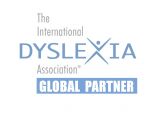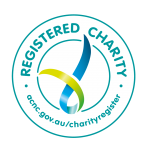Phonological Processing
Processing weaknesses are common in students with learning disabilities
Students who have a specific learning disorder with impairment in reading and/or written expression tend to have difficulties processing speech (phonological processing) and they may also struggle to process and recall the letter patterns used in written language (orthographic processing).
What is phonological processing?
Phonological processing comprises three areas of functioning:
- Phonological Awareness
- Phonological Memory
- Rapid Automatised Naming
Students who have a weakness in one or more of these areas are likely to experience literacy-learning difficulties.
Phonological and Phonemic Awareness
Many students with learning disabilities have difficulty attending to the sounds and oral language patterns within words. This ability is called phonological awareness. In the early years of schooling, students may show difficulties in:
- detecting and creating rhyming words
- breaking words into syllables
- identifying the phonemes (individual sounds) at the beginning and end of words
- isolating, deleting and substituting phonemes within words.
Frequently, older students who have an SLD with impairment in reading also demonstrate difficulties in some of these more complex phonological processes (especially in accurate and efficient phoneme identification and manipulation).
The ability to work with syllables, and to blend and segment phonemes in words, is critical to the development of good reading and spelling skills. Students need to learn that the sounds they are making when they speak relate directly to the letters they use when reading and writing. Essentially, we blend to read and we segment to spell.
Phoneme blending requires listening to a sequence of separately spoken sounds and combining them to form a recognisable word, for example, the sounds /sh/ /o/ /p/ form the word shop.
Phoneme segmentation requires breaking a word into its sounds by tapping out or counting the sounds, for example, “How many phonemes in block?” (four: /b/ /l/ /o/ /ck/).
Phonological Memory
The ability to hold on to speech-based information in short-term memory is called phonological memory. We rely heavily on our phonological memory when reading and spelling.
This skill is assessed by asking students to remember strings of numbers or to repeat nonsense words of increasing length and complexity. Students with poor phonological memory are unable to hold as much phonological information in mind as their age-matched peers. When recalling nonsense words, they tend to forget parts of the word and/or confuse the sounds and sequence of sounds in the word.
Students who have an SLD in reading and/or written expression often have weaknesses in phonological memory.
Rapid Automatised Naming
A skill that is commonly assessed in the identification of an SLD in reading and/or written expression is referred to as Rapid Automatised Naming (RAN). It requires an individual to quickly identify and name a series of common stimuli (e.g. letters, numbers, colours, objects). People with learning disabilities often take longer to name items when compared to their peers.
RAN provides information about an individual’s ability to retrieve words quickly and easily from long term memory. Students with a poor RAN score (and, therefore, difficulties with rapid word retrieval) tend to have weaknesses in reading and writing fluency. These difficulties often become apparent later in a student’s education.
Information reproduced from AUSPELD Understanding Learning Difficulties: A practical guide (Revised edition).






